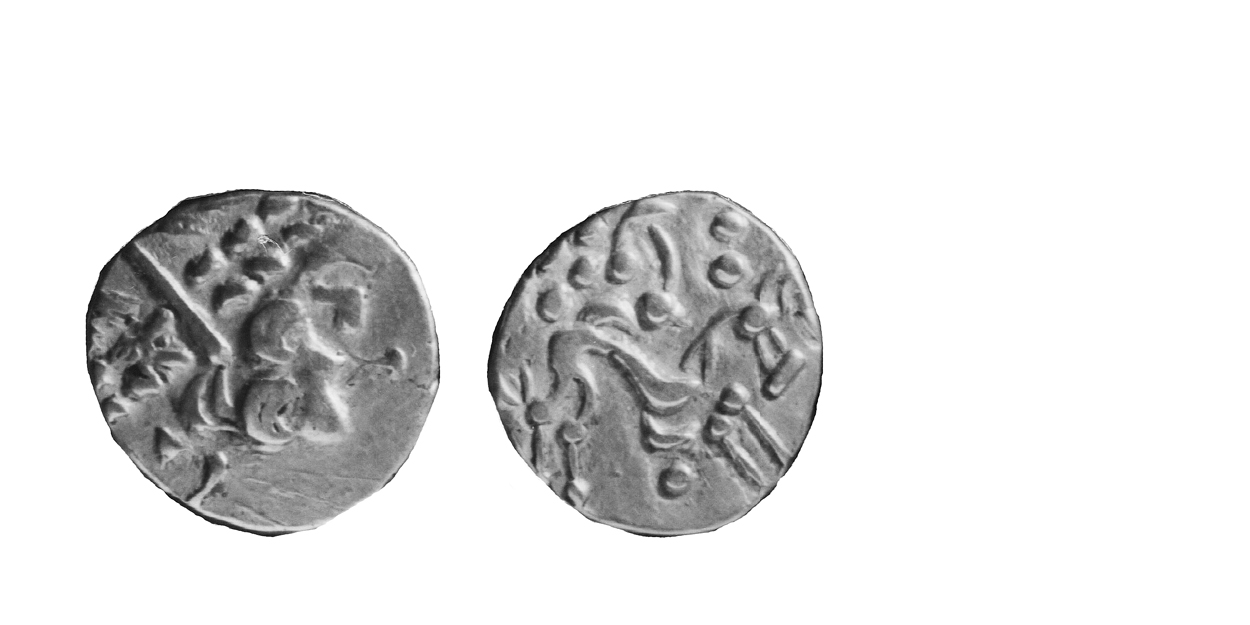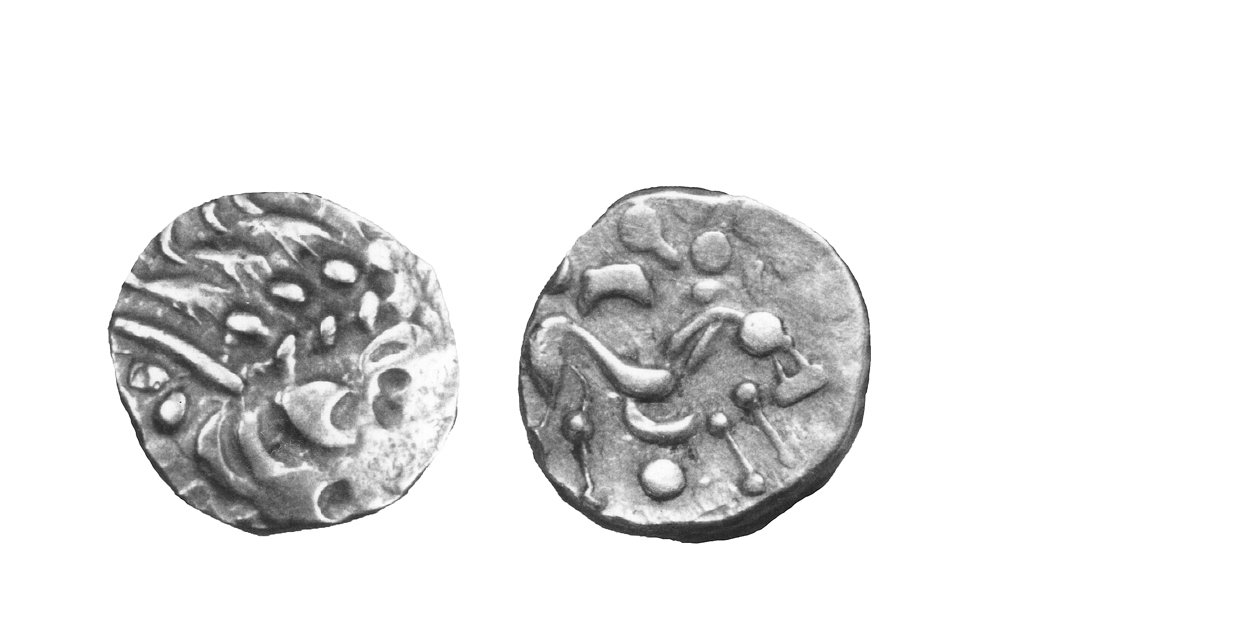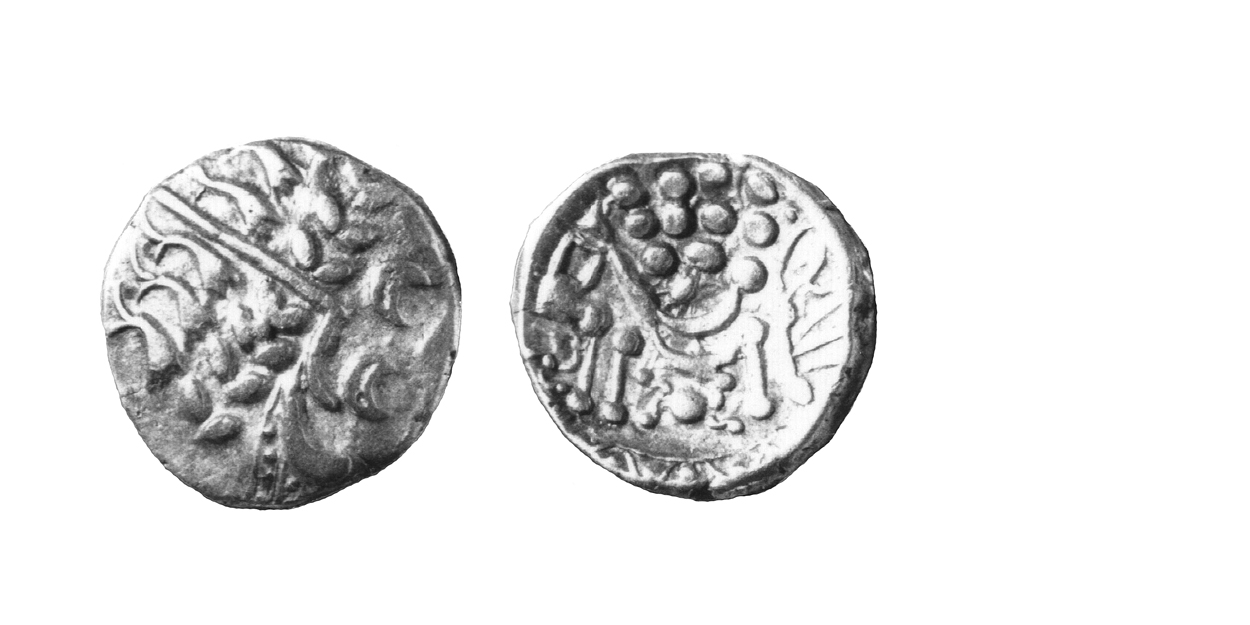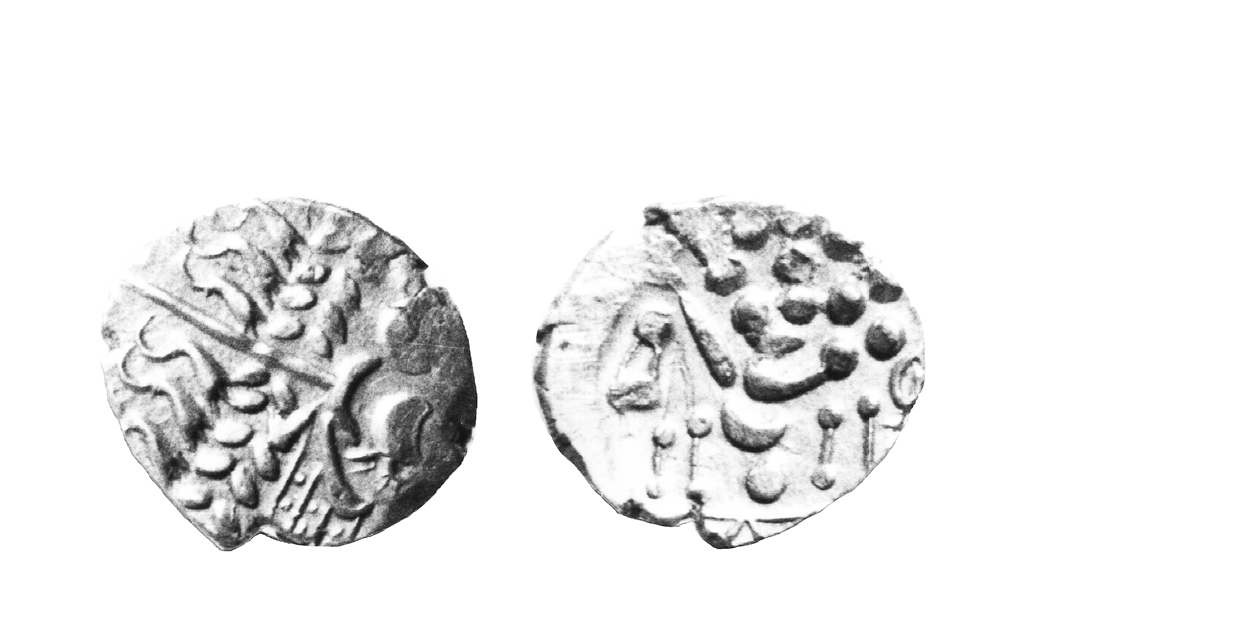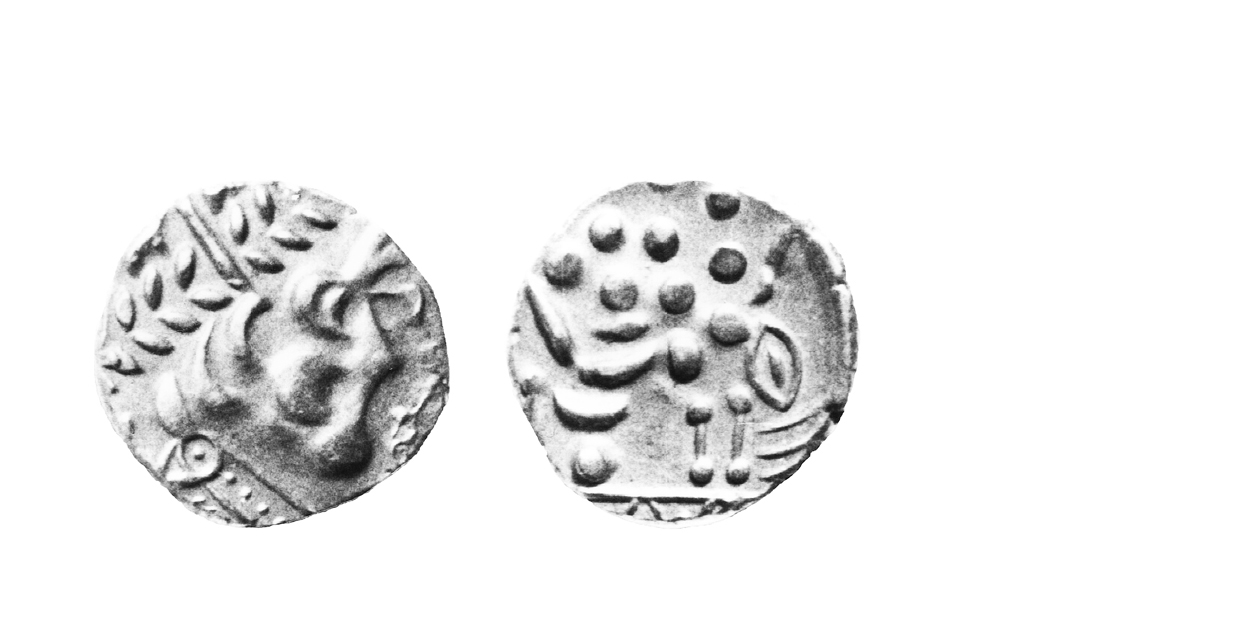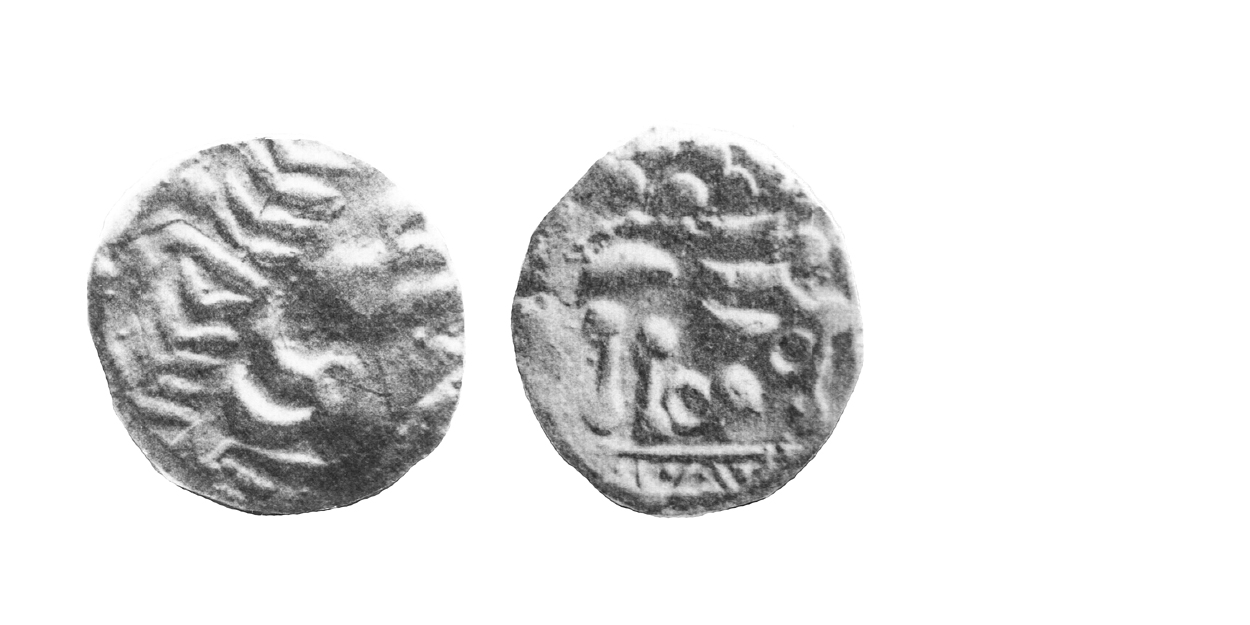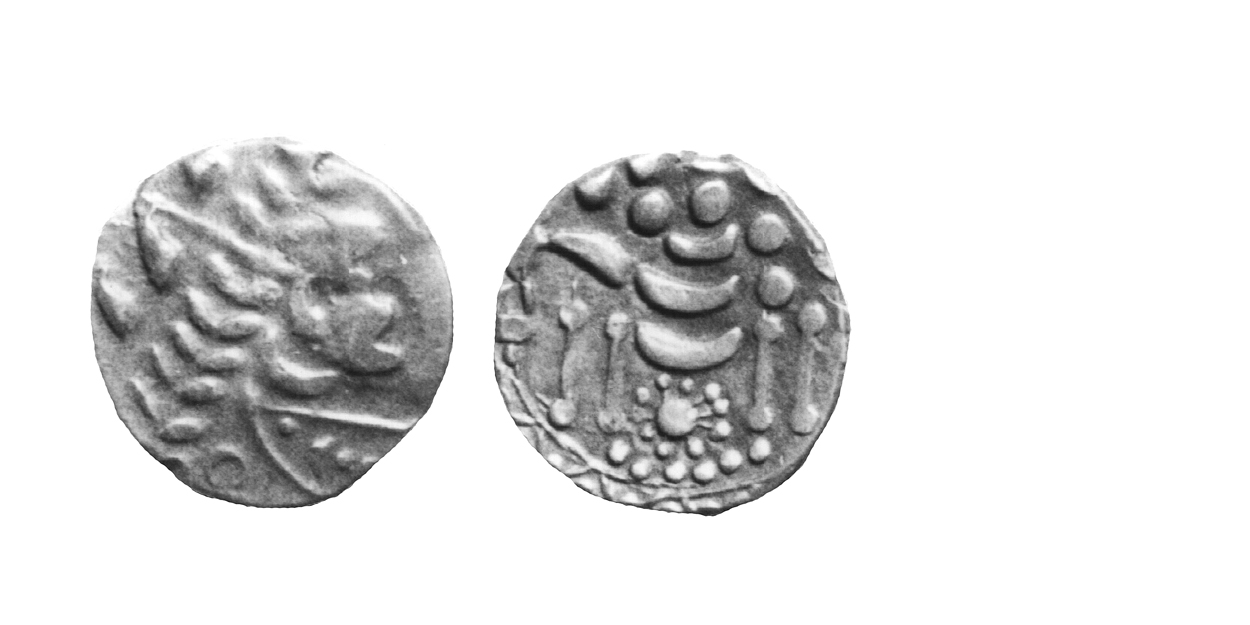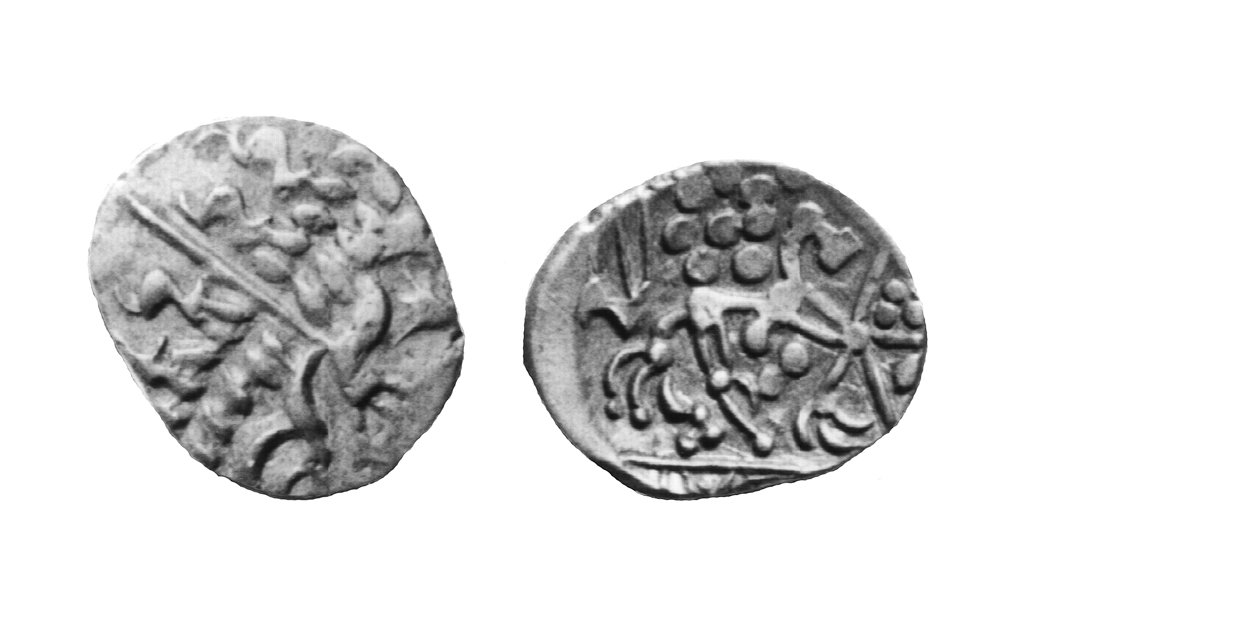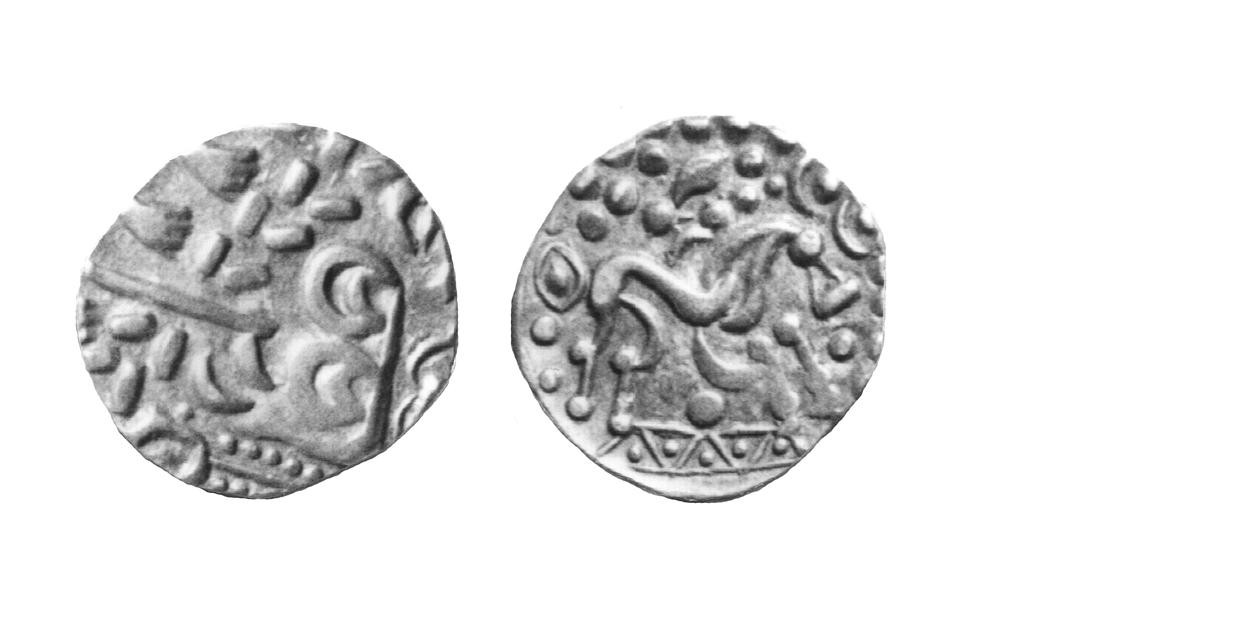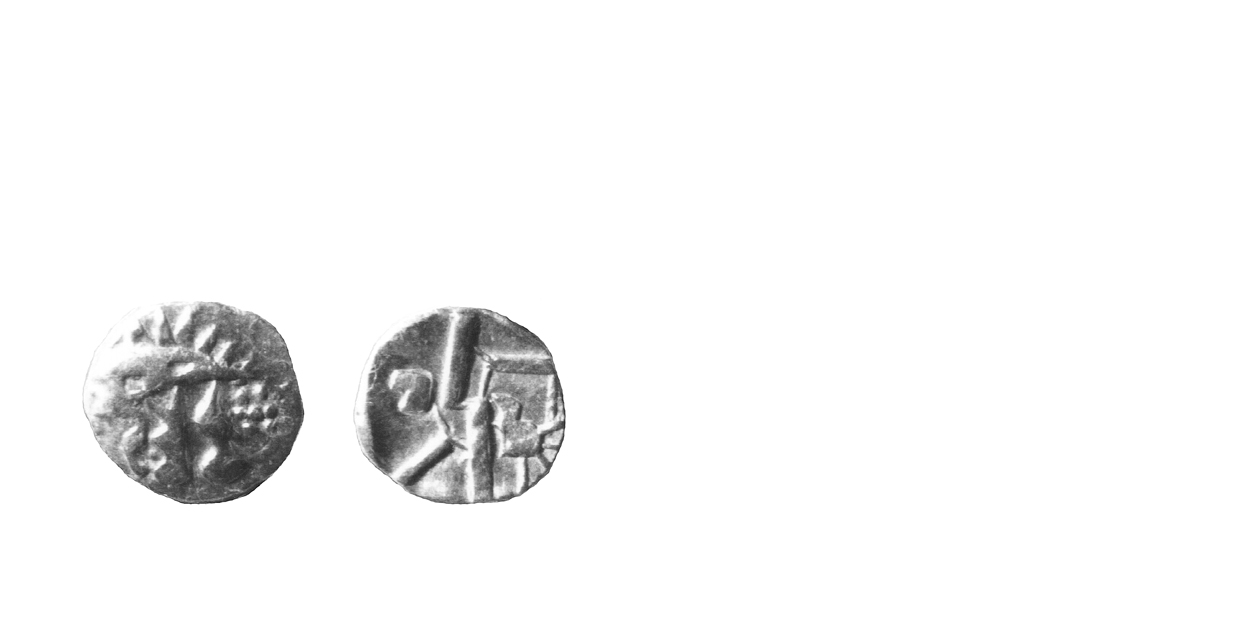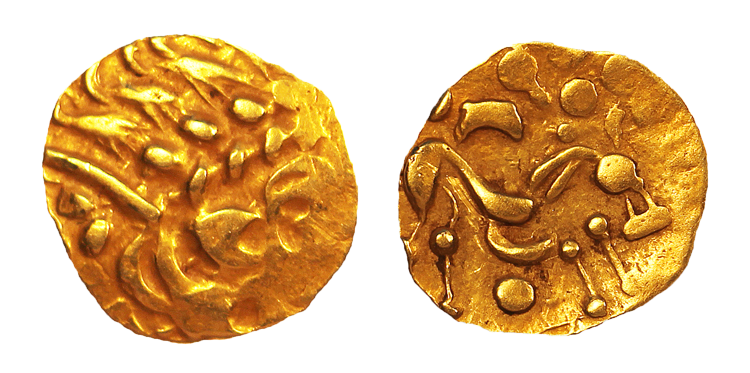
History
Earliest Struck Coinage (Info)
Early Struck Coinages in Britain 70 – 55 BC.
Some time after the inception of the cast coinage in Kent and Essex, several tribes made their first fitful attempts to strike gold staters (28). About 70 B.C., or shortly thereafter, the Atrebates/Regni/Belgae produced a copy of the imported Abstract Design Type, struck roughly to the same standard. This coin, named the Insular Type, was somewhat more stylized than its Gallic prototype. The appearance of these coins induced the Durotriges, the neighbouring tribe to the west, to issue the Chute Type starting perhaps around 65 B.C.
Between 65 B.C. and the middle of the Gallic War, seven new types appeared. The Westerham (South)type replaced the Insular type in the territory of the Artebates/Regni/Belgae. The Westerham (North), Ingoldisthorpe, Waldingfield and Clacton types appeared in the territory of the Trinovantes/Catuvellauni. The Yarmouth Type, possibly Durotrigan, appeared in the southwest. Finally, the North East Coast type appeared as the first coinage of the Corieltauvi.
In all, four British tribes issued coins by the middle the Gallic War, giving us the first shadowy glimpse of tribal territories in Britain. Caesar substantiated the testimony of the coins by confirming a tribal structure in his writings. The Durotriges, Atrebates/Regni/Belgae, Trinovantes/Catuvellauni and Corieltauvi had all, by this time, progressed sufficiently to require coinage and all struck coins to the standard weight of the Gaulish staters. The Trinovantes and Catuvellauni, seemingly distinct in the historical record, cannot be distinguished in the numismatic one (29). Although Cassio Dio mentions the Catuvellauni in his account of the Claudian invasion, they are not mentioned by Caesar. Possibly the historical importance of the Catuvellauni has been exaggerated by earlier interpretations of the numismatic evidence.
The Iceni did not begin to strike coins until the late stages of the War. The Dobunni, later to issue coins, were not a part of the early activity and cannot be identified in the numismatic record until after the Gallic War (30). The Cantii, perhaps because they had access to large quantities of Gallic War type staters, did not strike their own gold coins until after the war and contented themselves with issuing the cast bronze pieces (31).
Some of these early staters, notably the Atrebatic/Regnan/Belgic and Trinovantian/Catuvellaunian, were short-lived and struck in small quantities. They probably represent local productions which met some local need, rather than a part of a grand scheme. It is likely they were struck only sporadically and their long term influence on British coinage was minimal. The issues were soon suspended, likely a result of events during the Gallic War (32). Most of these early gold issues are today quite rare and have a small number of recorded findspots. It is sometimes difficult to establish their tribal origin with certainty. Even the commoner of the rare types, such as the Westerham types, are commoner because of one or two hoards.
However, for the tribes farthest from the cross-channel trade with Gaul, the early issues were the beginning of continuous and long-lasting coinages. The North East Coast type was issued in considerable quantities and ultimately lead to the rich and varied South Ferriby Types and the long run of inscribed Corieltauvian coinage. Late in the war, the Icenian Norfolk Wolf Type became gradually debased with first silver and then copper. Finally it became merely billon, to be replaced entirely with a restored coinage (33).
The Durotriges tried to maintain a gold coinage for external trade during the early stages of the Gallic War. However, for internal use they switched to white-gold coins, these having a very low gold content. Surprisingly, the white-gold pieces were copied from the Westerham (South) type, rather than the Durotriges' own Chute Type. The crab below the horse was replaced by a simple pellet, similar to that on the Westerham staters. Although the coins were primarily used inside Durotrigan territory, some have been found to the east, in Atrebatic/Regnan/Belgic territory. Perhaps, trading contacts between the two tribes were the motivation for the stylistic change (34). Soon the Durotriges removed almost all the gold from the alloy and issued the same type in the form of silver staters. These silver staters were coined in vast quantities and the coinage continued into the 30s B.C.
The first British quarter staters appeared around the middle of the Gallic War, in the territory of the Atrebates/Regni/Belgae and Durotriges. The first, known as Geometric types, were struck in gold. In the territory of the Durotriges, however, the alloy rapidly debased to white-gold and finally to silver.
Next section: Coinage and Trade at the Outset of the Gallic War

